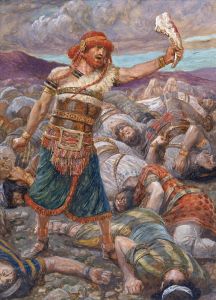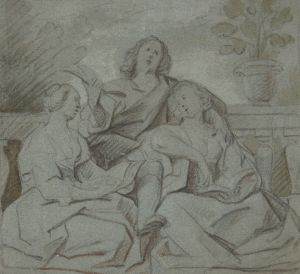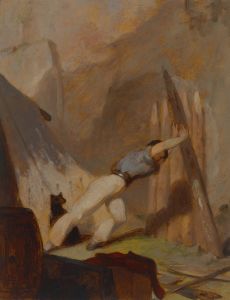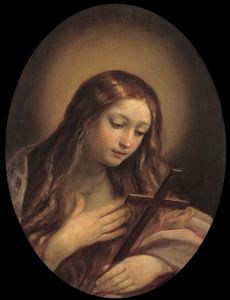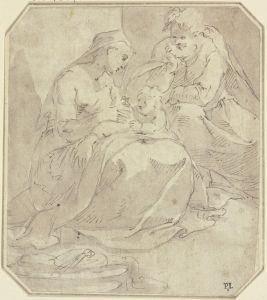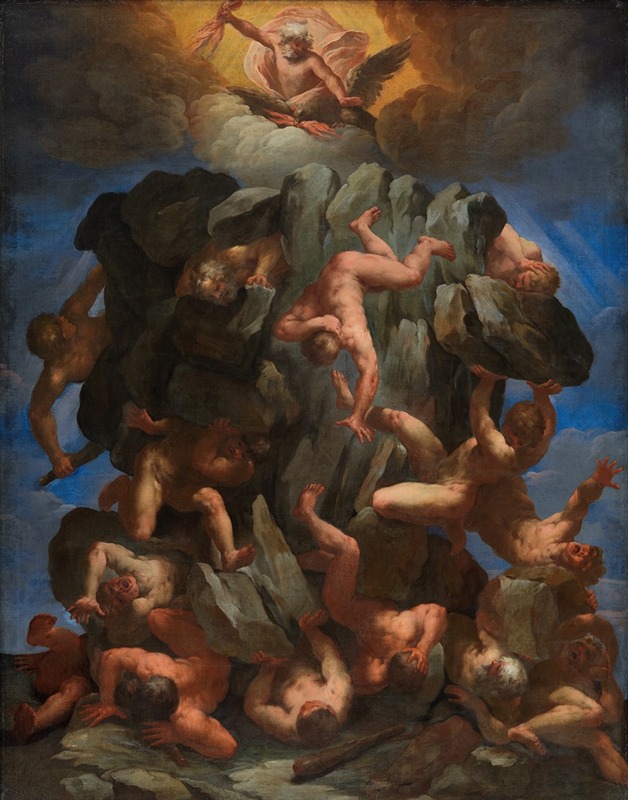
The Fall of the Giants
A hand-painted replica of Guido Reni’s masterpiece The Fall of the Giants, meticulously crafted by professional artists to capture the true essence of the original. Each piece is created with museum-quality canvas and rare mineral pigments, carefully painted by experienced artists with delicate brushstrokes and rich, layered colors to perfectly recreate the texture of the original artwork. Unlike machine-printed reproductions, this hand-painted version brings the painting to life, infused with the artist’s emotions and skill in every stroke. Whether for personal collection or home decoration, it instantly elevates the artistic atmosphere of any space.
"The Fall of the Giants" is a monumental fresco by the Italian Baroque painter Guido Reni. This work is a significant example of Reni's mastery in fresco painting and his ability to convey dramatic narratives through art. Created between 1636 and 1637, the fresco is located in the Palazzo Pallavicini-Rospigliosi in Rome, Italy. It was commissioned by Cardinal Giovanni Battista Pamphilj, who later became Pope Innocent X.
The fresco depicts the mythological story of the fall of the giants, a popular theme in Renaissance and Baroque art. According to the myth, the giants attempted to overthrow the Olympian gods by stacking mountains to reach the heavens. In response, Jupiter, the king of the gods, struck them down with his thunderbolts, causing the mountains to collapse and the giants to fall. This narrative provided a rich source of inspiration for artists, allowing them to explore themes of divine power, chaos, and the consequences of hubris.
Reni's interpretation of the myth is characterized by its dynamic composition and dramatic use of perspective. The fresco covers an entire ceiling, creating an immersive experience for viewers. Reni employed a technique known as "di sotto in sù," which means "from below upwards," to give the illusion that the figures are falling towards the viewer. This technique enhances the sense of movement and adds to the drama of the scene.
The composition is dominated by the figure of Jupiter, who is depicted in the act of hurling thunderbolts at the giants. His powerful form is surrounded by swirling clouds and other gods who assist in the battle. The giants, portrayed in various poses of defeat and despair, are shown tumbling downwards amidst the chaos. Reni's use of foreshortening and his skillful rendering of anatomy contribute to the realism and intensity of the scene.
Reni's color palette in "The Fall of the Giants" is both vibrant and harmonious, with a careful balance of light and shadow that enhances the three-dimensional effect of the fresco. The artist's attention to detail is evident in the intricate depiction of the giants' muscular forms and the ethereal quality of the divine figures.
This fresco is a testament to Reni's ability to blend classical themes with the dramatic flair of the Baroque period. His work on "The Fall of the Giants" reflects the influence of earlier Renaissance artists while also showcasing his unique style and technical prowess. The fresco remains an important example of Baroque ceiling painting and continues to be admired for its artistic and historical significance.
"The Fall of the Giants" is not only a masterpiece of Baroque art but also a reflection of the cultural and artistic milieu of 17th-century Italy. It exemplifies the grandeur and theatricality that characterized the period and highlights Reni's contribution to the development of Baroque art.





